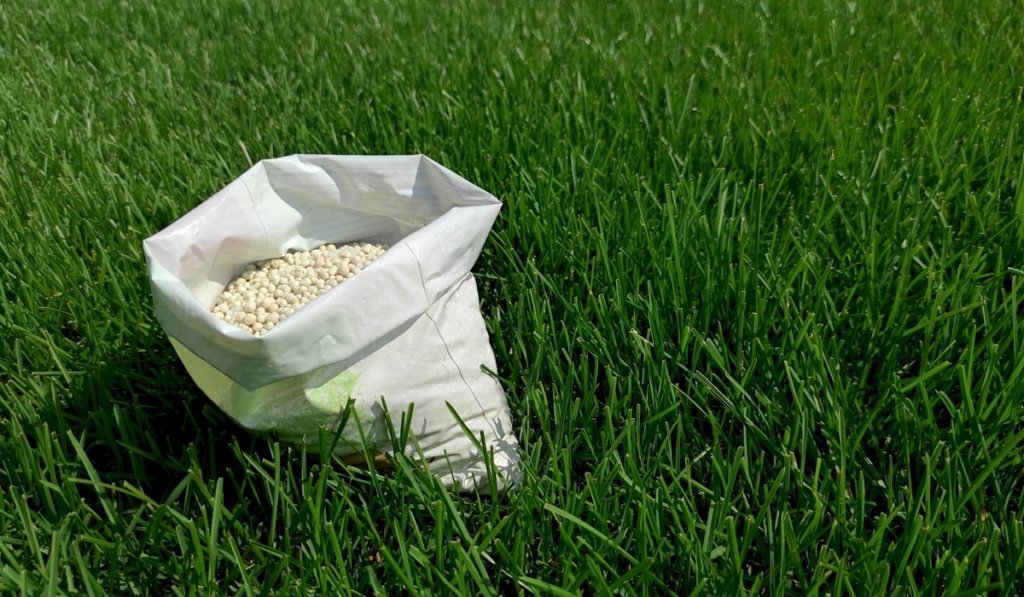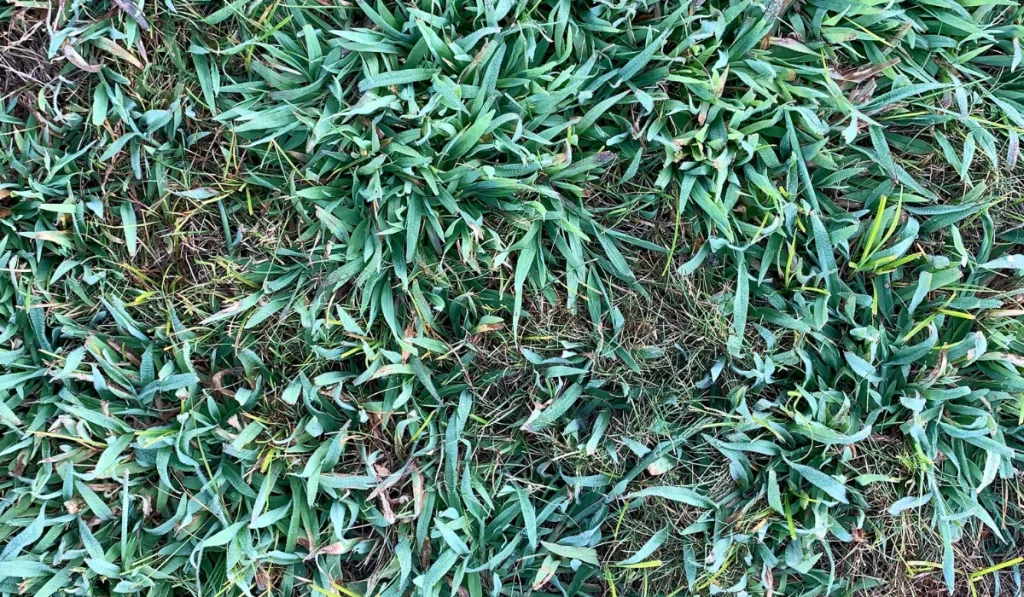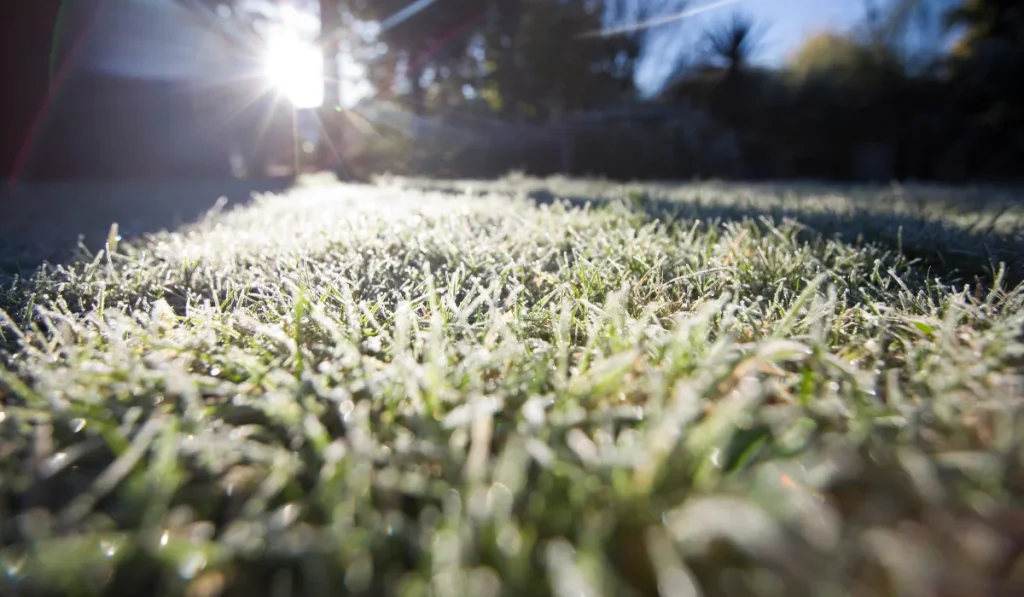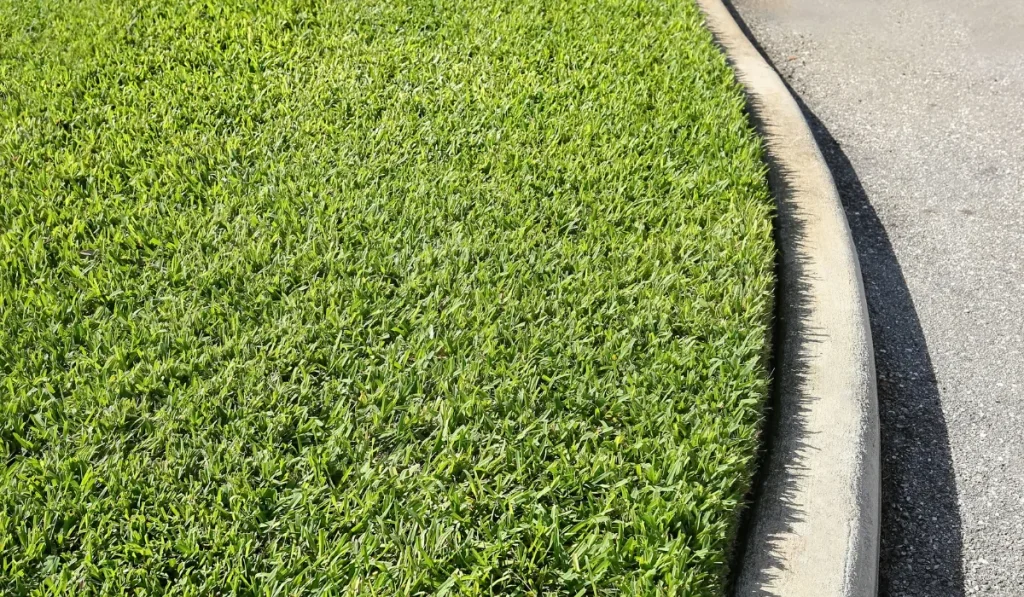You are what you eat, whether you’re a human or a healthy, green lawn.
Like us, plants take in and rely on the nutrients around them to grow and survive. But instead of visiting a local supermarket, plants draw in the things they need from the soil they’re rooted in.
It may seem obvious, but understanding this fact leads us to another question: What exactly is in soil, and how does it help grass actually go?
Knowing your grass’s nutritional needs is vital for any homeowner or groundskeeper looking to grow lush and beautiful turfgrass. Let’s take a closer look at which nutrients help grass flourish, how they do so, and how you can ensure your specific type of grass gets the nutrients it needs.
Key Takeaways
- Nitrogen, potassium, and phosphorus are the main nutrients grass needs to grow and thrive. They can be added to grass through fertilization and the use of specific soils.
- The nutrients your grass needs depend on what turfgrass it is. Cool- and warm-season grasses often have different nutritional needs for growth and maintenance.
- Good lawn care can help keep your grass healthy and green throughout its growing season.
Essential Nutrients for Grass Growth
Plants need essential macronutrients like nitrogen, potassium, and calcium as well as micronutrients like iron, zinc, magnesium, and copper. Micronutrients are needed in smaller amounts than macronutrients.
The essential macronutrients for grass growth and health are “N-P-K”: nitrogen, phosphorus, and potassium.
Nitrogen
The first significant nutrient to be aware of for grass growth is nitrogen (N). It’s a critical nutrient for giving turfgrass its green color and leafy, fast-growing properties. Lawn grass needs more nitrogen than any other nutrient, so keeping a close eye on nitrogen levels in your soil is vital.
Importantly, nitrogen needs to be replaced regularly to stay at adequate levels. This is because nitrogen can easily move through soil when it’s watered, so it might not stick around long enough to nourish your grass.
Phosphorus
Phosphorus (P) is used for many important plant growth processes. It can be found inside plant cells and helps operate the internal machinery of plants or the processes that help grass grow and keep itself alive.
Potassium
Potassium (K) is a macronutrient associated with the movement of water, nutrients, and carbohydrates in a plant’s tissue. It also helps activate enzymes within plants, meaning it can affect the production of a plant’s building blocks: protein, starch, and adenosine triphosphate (ATP).
The production of ATP is a vital part of photosynthesis, so potassium plays an essential role in helping plants feed themselves over time. Potassium can also help increase root growth and protect plants against drought.
Nutrient Requirements for Different Grass Types
Not all types of turfgrass are created equal; the steps you’ll need to take to grow a healthy lawn will depend on what kinds of grass you’re working with. Let’s look at some common types of grass and what unique nutritional needs, if any, they come with.
Cool-Season Grasses
Prevalent in many regions of the U.S., cool-season grasses typically perform best when grown at temperatures between 60 and 75℉.
| Type of Grass | Popular Uses | Nutritional Needs |
| Kentucky bluegrass | Home lawns, parks, athletic fields | May require more nitrogen than other options (2 to 4 lb N/1,000 sq ft) |
| Rough bluegrass | Shaded areas, home lawns | May require more nitrogen, though less than Kentucky bluegrass (2 to 3 lb N/1,000 sq ft) |
| Perennial ryegrass | Parks, grounds, golf courses, home lawns | Grows best in higher pH soils and needs about 3.0 lb N/1,000 sq ft |
| Tall fescue | Parks, playgrounds, athletic fields, home lawns | Usually grows best when fertilized with 2.5 to 3 lb N/1,00 sq ft each growing season |
| Fine fescues | Lawns, parks, grounds | Respond well to low pH soils and low nitrogen levels (1 to 2 lb N/1,000 sq ft) |
| Bentgrasses | Golf courses, fairways, grass tennis courts | Ideal rates of nitrogen vary between different grasses but, in general, fall between 2 to 4 lb N/1,000 sq ft |
Warm-Season Grasses
Turfgrasses that are considered warm-season species usually experience optimum growth between 80 and 95℉.
| Type of Grass | Popular Uses | Nutritional Needs |
| Bermuda grass | Athletic fields, golf course fairways | Soil tests will reveal precise needs, but in general, apply around 0.5 to 1 lb N/1,000 sq ft |
| Bahia grass | Roadsides and highways | Can tolerate a wide range of soils and fertilizers with little specific nutrient needs and high drought-resistance |
| Centipede grass | Home lawns, areas with little foot traffic | Does not need nitrogen added in early spring. Around mid-May, may benefit from about 1 lb N/1,000 sq ft. May also need iron supplementation to enhance color. |
| Zoysia grass | Home lawns | Responds well to low nitrogen rates, around 1 to 2 lb N/1,000 sq ft each growing season |
| St. Augustine grass | Pastures, ranches, home lawns | Needs around 0.5 to 1 lb N/1,000 sq ft in spring. May require additional iron to enhance color. |
Nourishing Your Grass
Once you’ve ensured that your grass has the right setup to get the nutrients it needs, you’ll still want to take steps to keep it healthy. Below are some key components of lawn care to keep in mind.
Soil Testing
On top of paying attention to nutrients, you should also keep a close eye on your soil. Both soil type and soil pH level can affect how your lawn grows, for better or worse. You can quickly and easily check the pH level of your soil with a home soil testing kit. Or, if you prefer, you can send a small sample to a local testing center for analysis.
If a soil test indicates high levels of any nutrient or an irregular pH (higher or lower than 6.0-7.0), it may be best to compensate with a fertilizer that will help balance things out.
Your test results can help you gauge how much of a nutrient you need based on the square feet of your lawn.
Fertilization
Lawn fertilizers should be selected with care based on the needs of your turfgrass. New grass might benefit from a fertilizer with a higher percentage of phosphorus, for example, to promote healthy root growth.
For more mature lawns, unless soil testing indicates that the turf needs supplemental nutrients, it’s usually best to stick with types of fertilizers that are balanced and more focused on maintenance.
As a final note, avoid adding nutrients to frozen, dormant, or drought-affected turf, as they may run off.
Timing of Fertilizer Application
Fertilizing at the right time can be crucial if you’re hoping for healthy grass that lasts the whole year. Applying a slow-release fertilizer in early spring is usually the best way to go. You can check the instructions on your soil bag for more specific application timing and rates.
Watering Practices
It’s typically best to water your lawn infrequently, as too much water can make it hard for turfgrass to retain the nutrients it needs to thrive.
When it is time to water, do so thoroughly; whether you’re watering grass seed or a fully-grown lawn, your grass needs sufficient water to promote deep root growth.
Maintenance Practices
Preventing problems can be much easier than solving them. To keep your lawn in good health, do your best to perform regular upkeep practices like:
- Mow The Right Way: Set your mower’s blade to a high setting to keep grass blades long enough to limit water evaporation. Return lawn clippings to the turf when mowing. This allows you to recycle nutrients like nitrogen and phosphorus by adding them back into your soil, thus reducing your overall annual fertilizer needs.
- Look Out for Pests: Signs of infestations, like dead or browned patches of grass, holes in the soil, etc., might mean it’s time to consult a lawn care professional. You can also take steps to eliminate pests yourself, such as applying pesticides to the affected area.
- Spot Nutrient Deficiencies: Discolored grass that seems to have stunted growth may lack vital nutrients. Test your soil to figure out what’s going on so you can supplement anything that’s lacking.
- Keep Weeds at Bay: Weeds can wreak havoc by stealing precious resources from your turfgrass. Remove them regularly and consider options like herbicides to keep them away.



